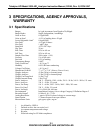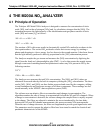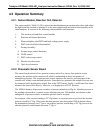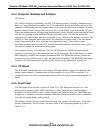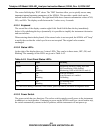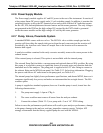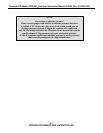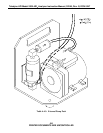
Teledyne API Model 200A NO
X
Analyzer Instruction Manual, 02246, Rev. G, DCN 5247
4.2 Operation Summary
4.2.1 Sensor Module, Reaction Cell, Detector
The sensor module (Table 9-9-20) is where the chemiluminescent reaction takes place and where
the light from the reaction is detected. It is the most complicated and critical sub-assembly in the
entire analyzer. It consists of the following sub-assemblies and functions:
1. The reaction cell and flow control module
2. Reaction cell heater/thermistor
3. Photo multiplier tube(PMT) and high voltage power supply
4. PMT cooler/cold block/heatsink/fan
5. Preamp assembly:
A. Preamp range control hardware
B. HVPS control
C. PMT cooler temp control
D. Electric test electronics
E. Optic test electronics
4.2.2 Pneumatic Sensor Board
The sensor board consists of two pressure sensors and a flow sensor. One pressure sensor
measures the pressure in the reaction cell,which is maintained at about one-quarter of
atmospheric pressure. The second pressure sensor measures the pressure just upstream of the
reaction cell, which is near ambient pressure. From these two pressures the sample flow rate can
be computed and is displayed as sample flow in the TEST menu. Finally, a solid state flow meter
measures the ozone flow directly. Likewise, it is displayed as a TEST function.
The M200A displays all pressures in inches of mercury-absolute (in-Hg-A). Absolute pressure is
the reading referenced to a vacuum or zero absolute pressure. This method was chosen so that
ambiguities of pressure relative to ambient pressure can be avoided.
For example, if the vacuum reading is 25" Hg relative to room pressure at sea level the absolute
pressure would be 5" Hg. If the same absolute pressure was observed at 5000 ft altitude where
the atmospheric pressure was 5" lower, the relative pressure would drop to 20" Hg, however the
absolute pressure would remain the same 5" Hg-A.
4-3
PRINTED DOCUMENTS ARE UNCONTROLLED





